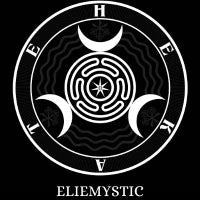The Evolution of Witchcraft Through the Centuries

The history of witchcraft is a lineage of force, fear, and endurance. It moves beneath civilizations, reshaping itself through persecution, fascination, and survival. Witchcraft has never bent to authority. It carries an unbroken current that threads through ancient rites, medieval suppression, and modern revival. To understand it is to trace the evolution of power itself.
Witchcraft in Ancient Times
Early witchcraft existed as a direct expression of nature’s potency. In ancient Greece, pharmakeia blended medicine, sorcery, and elemental mastery. Practitioners shaped fate through herbs, incantations, and transformation. In Rome, maleficium described a sharper edge of magic, one centered on influence, domination, and consequence. This era approached witchcraft as a tool of command, free from moral frameworks. It served healing, destruction, and everything in between. The witch stood as an intermediary between human will and natural law.
The Middle Ages
As institutional power expanded, witchcraft became a threat. The church sought control over belief, ritual, and the unseen. Anything outside its jurisdiction became an adversary. Accusations, trials, and executions emerged from a climate of fear and manipulation. The witch hunts and the Salem trials reflected collective panic and political convenience. The aim was not purification but domination. Witchcraft retained its essence, yet society projected its anxieties onto those who embodied independence, knowledge, or influence.
The Evolution of Witchcraft
Despite centuries of persecution, witchcraft continued its metamorphosis. By the twentieth century, its current resurfaced through modern paganism and what later became Wicca. These movements reclaimed ritual, nature, sacred cycles, and personal power. Witchcraft shifted into a spiritual path centered on transformation, intention, and self mastery. Though reinterpreted, the foundation remained the same. A disciplined engagement with energy, presence, and the unseen.
Witchcraft in the Digital Age
Today, witchcraft has entered a new phase. Online spaces have created a global revival where younger generations seek autonomy, embodiment, and connection to natural and occult forces. Instead of fear, there is curiosity. Instead of secrecy, there is reclamation. Contemporary witchcraft blends ancient knowledge with modern expression, turning it into a form of rebellion against constraint and a return to intuitive intelligence. The digital age has amplified witchcraft’s reach without diluting its core.
Conclusion
Witchcraft remains a force that moves through eras untouched by erasure. Its endurance comes from its essence. Power, intuition, presence, and transformation. It survives because it speaks to what is primal and undeniable. Whether practiced in temples, forests, hidden circles, or digital spaces, witchcraft continues its lineage. A living current carried by those who refuse to relinquish their own sovereignty.

it’s fascinating how the perception of witchcraft has shifted so dramatically from the Middle Ages to now. From fear and persecution to acceptance and exploration in the digital age.